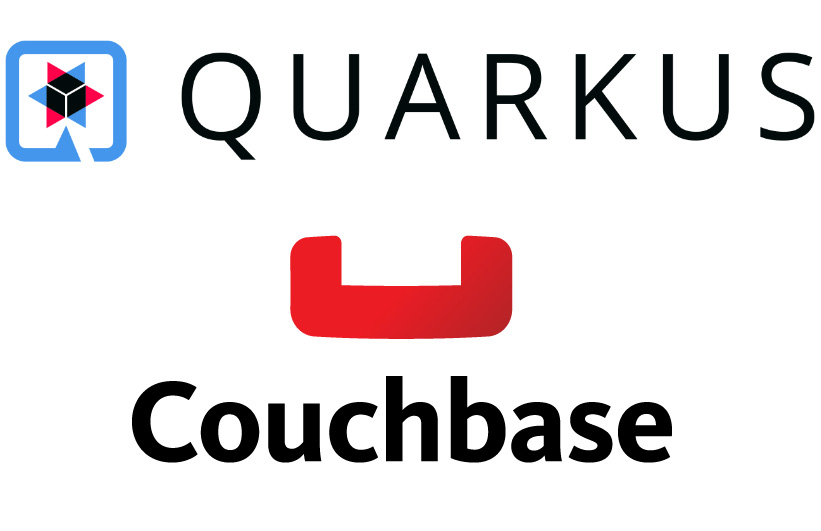Corporate Digitalization: Everything You Need to Know
DXP
Corporate Digitalization: Everything You Need to Know

What is corporate digitalization and what are its advantages?
The meaning of corporate digitalization
It is important not to generalize the definition of corporate digitalization, as doing so runs the risk of limiting the understanding of its potential.
Digitalization means simplifying and saving by using technology with different solutions according to one's needs. Specific differentiators only come into play when customizing tools with ad hoc integrations. However, even this aspect represents an advantage.
Digitalization also involves abandoning traditional, so-called analog tools in order to streamline workflows and automate activities and procedures, whether they are related to the production and distribution of products and services, marketing and sales, customer care, or the management of administrative, accounting, and tax-related documents.
Digitalization also means dematerializing physical spaces to communicate and share information in real-time, in a single connected and collaborative environment, even remotely. Corporate digitalization brings new participatory modes and open workspaces, no longer limited to a particular context, desk, or office, but shareable from a distance, from video conference meetings to customer support via chat, to interactions on social networking platforms dedicated to employees, external collaborators, and customers.
And speaking of corporate social channels, participation in conversations and their monitoring is replacing "old-fashioned" market research in favor of immediate access to an incredible amount of data and feedback to intercept opinions, sentiments, and trends. Valuable information to improve products and services or implement new ones.
Dematerializing physical space, also understood as electronic storage and preservation system, represents gains in efficiency, speed, and full control of data flow. Economic savings materialize in the replacement of paper and isolated computer systems with digital storage where documents and multimedia content can be stored, updated, and shared.
The entire document workflow is entrusted to the automation of software platforms, eliminating the need for manual input or complex searches.
Digitalizing operational models also means correcting and optimizing critical processes based on accurate data derived from intelligent analysis with no margin for error. In particular, marketing can leverage software automation to generate profiled databases, capture potential customers, and retain those already acquired with campaigns built around user behaviors, preferences, and actions, both online and offline.
To summarize, corporate digitalization is a global transformation that, through systems governed by technologies such as Machine Learning and Artificial Intelligence, achieves the following:
- Automates the entire business management.
- Creates new channels for sharing and selling.
- Collects, processes, and synchronizes data for managing production cycles and the movement and distribution of goods.
This can be seen, for example, in connected devices for synchronized control of warehouses, inventories, and monitoring the efficiency of machinery and facilities (IoT - Internet of Things).
Corporate digitalization in Italy and the turning point during the COVID-19 emergency
The situation in Italy
We hear about it and are surrounded by it. Although digital technology has now become an integral part of our daily lives, paradoxically, many industrial sectors still operate with analog models, prompting the question of where we stand in Italy regarding technological innovation.
Considering younger companies, the data is encouraging: startups are born with a digital footprint and a strong and steady step towards progress. Many of them embark on businesses focused precisely on digitalization, giving birth to brilliant and revolutionary ideas and initiatives.
Less encouraging, compared to the European average, are the data on the digitalization of older small and medium-sized enterprises (SMEs), which still work with traditional tools, such as telephone, fax, paper document management, and/or computer systems that require manual operations, posing high risks of errors, incompleteness, and information loss.
Before the advent of COVID-19, only 33% of SMEs were interested in the concept of remote work. Today, out of approximately 23 million workers (both employees and non-employees), it is estimated that 10 million need the ability to work remotely (+1654%).
Among the difficulties in implementing a true digital revolution, intense workflows need to be considered, particularly in manufacturing companies and logistics services, to name a few, which cause delays and heavy conditions of "stagnation" paid at the high price of wasted energy, time, and money.
In particular, companies that provide integrated offline and online services or those with urgent characteristics, such as roadside assistance or freight transportation, suffer from inefficiencies in a poorly optimized network, resulting from a lack of operational methods capable of coordinating and managing information flow promptly.
Despite the current situation, awareness of the need to innovate business processes is growing. Not surprisingly, the topic is attracting increasing interest because the economic and managerial benefits are concrete and measurable, representing an achievable goal for companies in every sector.
Certainly, "changing one's skin" first and foremost involves a change in mindset and a reassessment of the current structure, which requires a clear analysis of the critical areas to be "cleansed" in order to pursue a focused strategy with specialized technological tools in specific areas and functionalities.
The first step for companies that still do not have a clear understanding of the concept of corporate digitalization, and struggle to progress in this direction despite recognizing its importance, is to grasp its meaning in order to focus on different enterprise solutions and possible on-premise or cloud-based implementations.
What can we expect from the future?
It is predicted that the digital market will be driven at least until 2020 by the Software and ICT Solutions, ICT Services, and Digital Content and Advertising sectors (Assinform, 2018), which show an average annual growth ranging between 5% and 7%.
This means that the already significant demand for digital products and services will continue to increase in the coming years. According to estimates by the World Economic Forum, 65% of children currently attending elementary school will work in jobs that do not yet exist. It is corporate digitalization that is driving the labor market in this direction, as it introduces and will continue to introduce innovative processes that require ever-changing and previously unseen skills in the workplace.
According to research by Intesa SanPaolo Research based on Netconsulting data, SMEs will continue to digitalize, at least until 2020, investing heavily in digital enablers rather than traditional IT products and services. Therefore, Wearables, Cloud, IoT, and Big Data will be the protagonists of digital investments in Italy.
Where to start implementing corporate digitalization?
The importance of a well-defined strategy
While initial confusion about the steps to take is understandable, especially for those who are not familiar with the subject, it is unacceptable to adopt a closed-minded attitude towards the prospects of digitalization. Progress is a natural step, an opportunity for everyone and not the prerogative of a few.
As we mentioned, the main causes of delay in corporate digitalization can be attributed to an old-fashioned mindset, lack of information, and limited knowledge. However, we also noted that awareness of its benefits is mature.
After understanding its meaning in its various aspects, implementing corporate digitalization only requires clarifying priorities and objectives, proceeding step by step guided by a preliminary analysis of the most pressing problems to solve and sustainable short-term and long-term goals.
From there, one can innovate business models, guided by a strategy that leaves nothing to chance or approximation.
Strategy is the most important phase that every company should go through, guided by the analytical eye of professionals capable of identifying challenges, establishing priorities, and setting evolving objectives based on revised Key Performance Indicators (KPIs) in light of new opportunities. From the analysis of these parameters, the most suitable software and solutions can be identified (e.g., on-premise or in the cloud), evaluated for their usefulness and convenience.
If necessary, it may be sensible to seek the opinion of external consultants who can understand the specific needs of the company and recommend customizable technologies based on those needs. Basic functionalities may be required to address the inefficiencies identified during the analysis phase, or more elaborate and tailor-made applications, or even management systems that can integrate with existing ones.
Instead of old infrastructures limited by isolated IT systems, one can migrate to server applications accessible through web browsers, free from hardware and any legacy constraints, and adopt various on-premise solutions, applications, and services implemented in the cloud or with a hybrid architecture to take advantage of both modes.
Depending on the industry, configured objectives, and necessary optimizations, management systems and ERP solutions can be introduced, as well as enterprise document platforms (Enterprise Content and Document Management) with basic functionalities or integrated tools.
What to look for in digital solutions for businesses?
No two companies are the same, so it is important to choose solutions that can adapt to specific needs. Fortunately, most (but not all) digitalization solutions allow a good degree of customization. Therefore, it is important to choose the right one.
Scalability is also crucial when searching for digitalization solutions. Scalability refers to the ability of digital solutions, whether they are corporate portals or management software, to adapt to the company's growth. It is not feasible for a company to remain constant in size over time. That's why it is important to adopt solutions that can accompany business growth in a simple and fast manner to avoid slowdowns or excessive expenses.
Accessibility is another fundamental aspect of modern digital solutions. There are numerous devices on which platforms or software adopted by the company should be accessible, such as PCs, tablets, and smartphones. Accessibility also extends to the interoperability of solutions, i.e., their ability to communicate with each other. This ensures smooth communication and efficient work within the company.
Which sectors and processes can be digitalized?
The transition from analog to digital is a natural process triggered by progress. All companies can benefit from it to automate their activities, offer faster and personalized services, streamline operations, digitize document archives, and take advantage of new communication and sharing channels. Is there any sector that can be said to be disinterested in these aspects?
It is clear that each company will have its own roadmap with priorities and objectives to define during the analysis phase mentioned earlier, in order to follow its path towards digitalization. The high level of customization of technologies allows for the creation of customized solutions based on the specific processes of each company.
With that said, there are still sectors that are less digitalized and pay a higher price compared to others. Among these sectors are Manufacturing, Logistics, Human Resources, and Public Administration. These sectors have numerous diverse departments and cross-functional relationships with employees, suppliers, external collaborators, users, and end customers, which require:
- Smooth management of all processes
- Automation of activities and tasks
- Control of a centralized and easily accessible and shareable archive
- Interoperability between various departments
- Security protocols to guarantee data protection and compliance with regulations.
To maintain an active role in the market and provide services that meet the expectations and established habits after the advent of the internet, manufacturing and logistics companies are focusing on the adoption of end-to-end technologies. The goal is to manage the entire product lifecycle and the supply chain more quickly and efficiently, from receiving raw materials to production and delivery of the finished product. They also show interest in data analysis to capitalize on it for forecasting, anticipating market trends, and developing new products and services.
In the field of Human Resources and Public Administration, it goes without saying how vital corporate digitalization is for paperless processes, electronic document management ensuring secure access, integrity, and authenticity.
Protected and shared information
The capabilities of an enterprise document platform include managing complex and detailed applications that can be accessed via smartphones and tablets. Its feature is to speed up document search and sharing through indexed databases that allow immediate content retrieval.
Equally important is document security, ensured through authenticated access that allows varying levels of permissions depending on the user profile, such as viewing, editing, writing, and deleting specific documents. The same security system extends to intranet and extranet networks and portals dedicated to suppliers, partners, and customers. Access through authentication provides entry into highly personalized environments, service pages, profiles, documents, and structured work areas based on the user type.
In all these cases, security is essential to guarantee privacy and protection of sensitive data. One of the characteristics of technologies for corporate digitalization is to operate with high-security standards in a regime of maximum confidentiality of information.
To understand which processes can be digitized, it can be useful to know some of the main basic functionalities of enterprise software:
- Workflow automation
- Notifications on task progress and generation of targeted warnings to users and relevant departments
- Authenticated access electronic archiving for document storage and real-time sharing and consultation
- Management of master data, orders, invoices and contracts, tickets, and support
- Marketing automation and monitoring of social channels
- Mobile accessibility.
The ROI of corporate digitalization
Costs, benefits and contextual specifics
Calculating the ROI associated with the introduction of digitalization solutions in a company requires stepping outside the conventional frameworks of this metric calculation.
Firstly, it is necessary to consider the specificities related to one's own industry and the company's implemented strategy, particularly analyzing contingent issues, imminent developments, and anticipated future evolutions. It is not feasible to use traditional business analysis KPIs for innovative processes such as digitalization.
That's why the fundamental aspect in calculating the ROI of corporate digitalization lies precisely in the ability to identify specific KPIs for the implemented projects. In general, it can be said that the introduction of digital solutions in a company must align with the revision of metrics used to measure the performance of different processes within the organization.
Due to the aforementioned specificity, it is difficult to indicate which aspects to consider when defining the ROI since each company is a unique case.
However, there are some general advantages and costs related to digitalization that can be useful as indications of the elements to consider. Possible advantages include:
- Activity automation
- Paperless dematerialization
- Improved internal communication
While general costs are related to:
- Customization and implementation of the solution
- Security and compliance with Italian regulations
Today, more than ever, digitalization becomes a fundamental element to ensure business continuity and the very survival of organizations.
At Extra Red, we have developed an end-to-end solution complete with software, hardware, connectivity solutions, and on-site technical support. This way, you can enable your employees to ensure maximum productivity and efficiency even while working remotely.
Are you ready to embark on the digital transformation journey for your company?
rocket_launch Contact us for advice!
other articles on the topic

Quarkus & Couchbase: a simple REST example

What is Business Intelligence?















